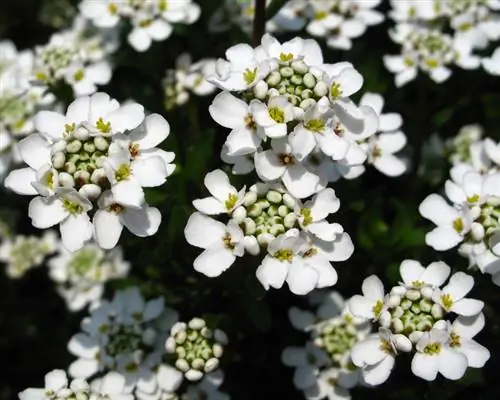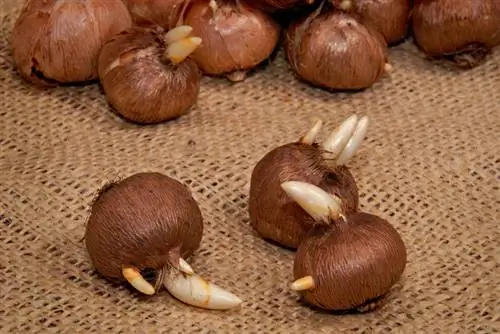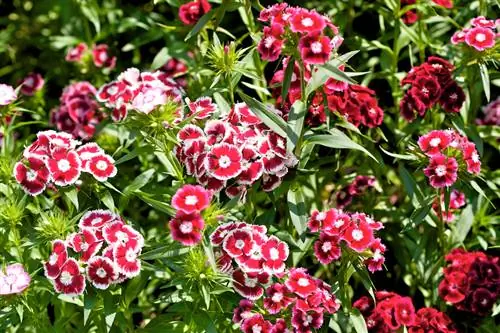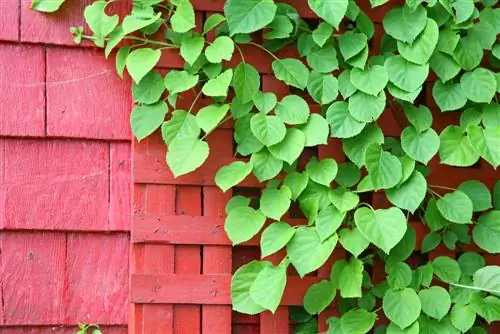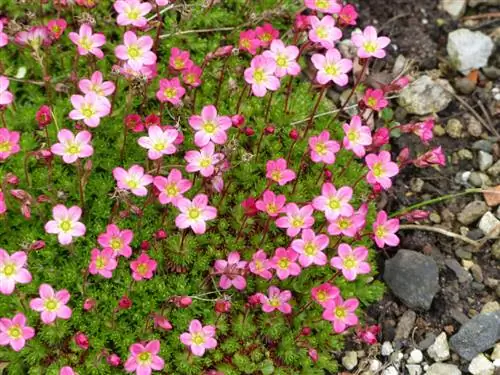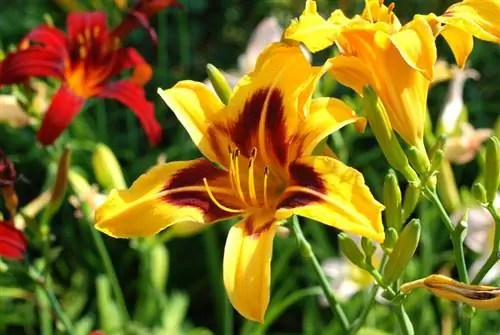- Author admin [email protected].
- Public 2023-12-25 17:45.
- Last modified 2025-01-23 11:20.
Rock gardens and wall crowns are decorated with candytufts in spring with a bright white sea of flowers. This means that the flower-rich Iberis is on a par with classic upholstery perennials such as blue cushion or stonewort. Their evergreen varieties also decorate the winter garden with distinctive decorative leaves. The following answers to frequently asked questions clarify all relevant details.
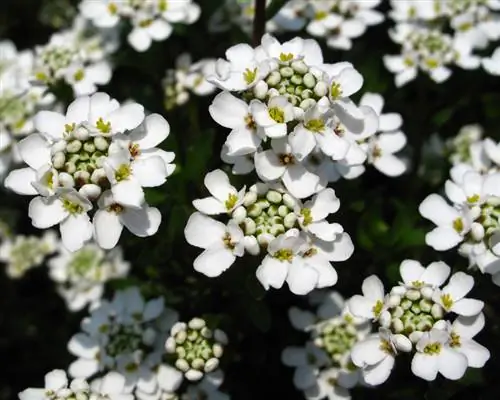
How do I properly care for a candytuft?
The candytuft (Iberis) is an evergreen perennial with magnificent flower umbels that shine on rock gardens and wall crowns in spring. It prefers sunny to shady locations, loose, sandy and nutrient-poor soils. Candytufts require little water and moderate fertilization for lush flowers.
Planting candytuft correctly
Plant candytufts in a sunny to shady location in nutrient-poor, loose, sandy and fresh soil. Please thin out normal garden soil by adding sand or fine grit. Please place the still potted root balls in a container with water until no more air bubbles appear. Meanwhile, dig the desired number of planting holes at a distance of 30-40 cm. Place a potted young plant in each hole so deep that the soil ultimately reaches the bottom pair of leaves. A generous sip of water rounds off the planting professionally.
Care tips
Your candytufts will become an opulent carpet of flowers if they are given this care program:
- In case of prolonged drought, water with normal tap water
- In March and after the summer pruning, fertilize with compost (€12.00 on Amazon) and rock dust
- Prune by a third after the first flowering phase
- In January/February, thin out the subshrub thoroughly and shorten it by up to two thirds
In regions with mild winters, you can safely enjoy the evergreen leaves of a candytuft. If in doubt, protect the perennial from bitter frost and constant wetness by covering it with autumn leaves and pine fronds.read more
Which location is suitable?
Titleflowers prefer a sunny to shady location. Although the little beauties tolerate partial shade, they fall short of expectations. All Iberis species and varieties thrive in mineral-sandy soils that are well-drained, moderately moist and calcareous.
The correct planting distance
A candytuft more than doubles its height in width. Pay particular attention to this attribute when measuring the planting distance. The ever-popular 'snowflake' and similar species should be located at a distance of 40-50 cm. A distance of 30-35 cm is good for dwarf varieties.
When is flowering time?
The main flowering period of a candytuft extends over the months of April and May. If spring comes with mild weather, the perennial puts on its flower dress in March and does not shed it until June. After the first flowering, cut the shoots back by a third and fertilize with compost, the perennial will reassemble diligently and bloom again in August/September.read more
Cut the bow tie correctly
The secateurs are an important utensil for preserving the vitality and flowering of a candytuft. We have put together all the relevant occasions for a cut here for you:
- Immediately after the first flowering, shorten the perennial by a third
- Cut half-woody head cuttings during the summer for vegetative propagation
- Cut to wintergreen foliage in autumn
- In late winter, thin out the subshrub and cut it back to the desired length
The less woody an Iberis is, the more luxuriant the flower will be. We therefore recommend a bold pruning of up to two thirds in early spring. Please note that the distinctive subshrub has difficulty coping with a cut into the old wood.read more
Watering the ribbon flower
The wasteful flower mats are the result of a low water balance. Only water a candytuft when the soil is completely dry. Allow regular tap water to slowly run onto the root disc until no more moisture is absorbed. A dry phase of 1 to 2 weeks does not cause any problems for the spring beauty, whereas waterlogging causes the tender roots to rot.
Fertilize candytuft properly
The desire for a lean, sandy-mineral soil results in a modest supply of nutrients. Fertilize a candytuft in March with compost (€12.00 at Amazon) and rock dust for a vital start to a flower-filled garden year. In connection with the slight pruning in summer, the perennial gratefully accepts another portion of compost.
Wintering
Regardless of its Mediterranean origins, the candytuft has a robust winter hardiness. In rough locations, we still recommend covering it with leaves and brushwood to protect the root ball from damaging permanent moisture. In addition, please do not cut back the wintergreen branches until January/February. Until then, they serve as natural protection against snow and bitter cold.
Propagate candytuft
Unfortunately, the candytuft prevents us from easily dividing the root ball for propagation. The perennial thrives from a single, narrow main root. The Iberis makes up for this shortcoming by offering us the following alternatives:
- Cut half-woody, non-flowering head cuttings and let them root in lean, moist soil
- Sprinkle the lower branches with humus as a sinker and cut them off after they have formed their own root system
- Collect the ripe pods with the seeds to sow them on the warm windowsill in winter
Since harvesting and sowing the fine seeds requires a lot of sensitivity, just leave this work to your candytuft. Only cut off the withered flowers when the seeds have spread throughout the bed.read more
Is candytuft poisonous?
The candytuft is classified as a slightly poisonous plant. This is due to various ingredients that can cause nausea and vomiting after consumption. The associated very bitter taste reliably prevents the intake of large quantities of leaves, flowers and seeds; Nevertheless, the pretty umbel flowers have a magical attraction for children. We therefore recommend refraining from cultivating it in the family garden or placing the perennial out of the reach of children.
Beautiful varieties
- Snowflake: Enchanting, wintergreen Iberis sempervirens, which presents us with white flower umbels in spring; 20-25cm
- Tahoe: Vigorous, white candytuft with evergreen foliage that is ideal as a ground cover; 20-25cm
- Sweetheart: Dainty, pink-flowering Iberis aurosica that develops magnificent cushions and flower cushions; 15-20cm
- Rock Candytuft: Robust subshrub with white flower umbels for the rock garden and gravel bed; 15-20cm
- White dwarf: The smallest candytuft, which adorns the spring garden with a cute 10 cm height; 15cm
- Appen Etz: Evergreen premium variety, ideal for wall crowns and sunny graves; 20-25cm

